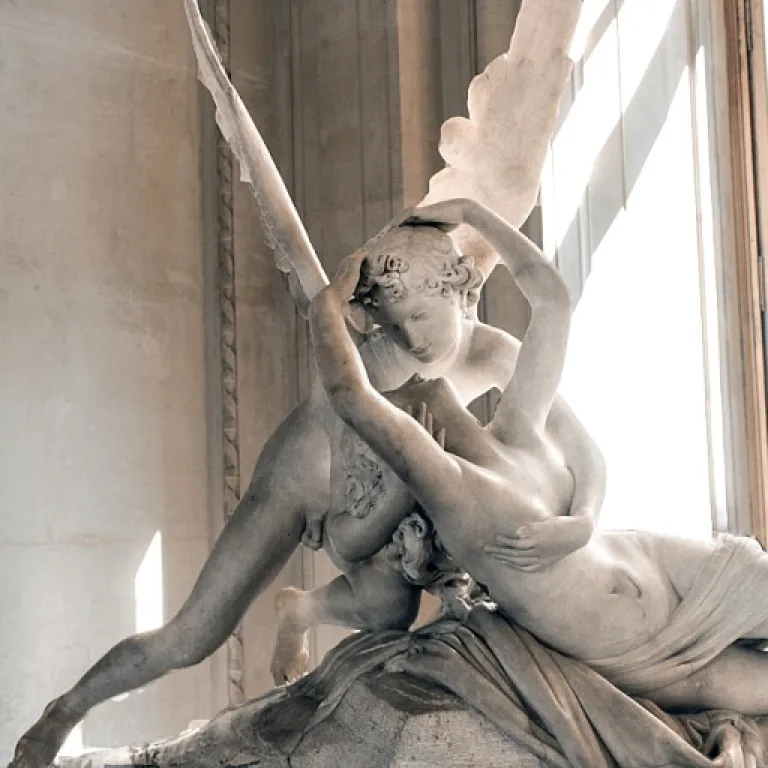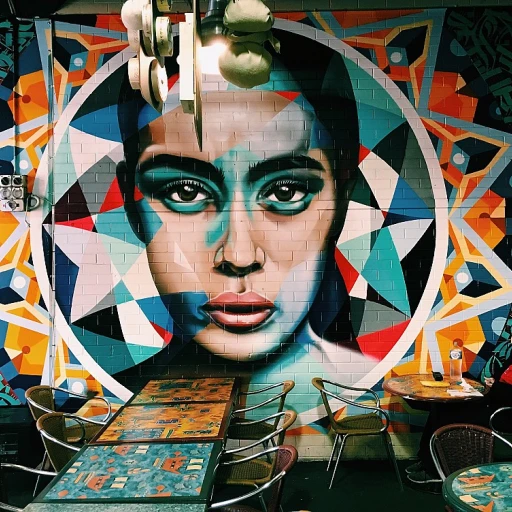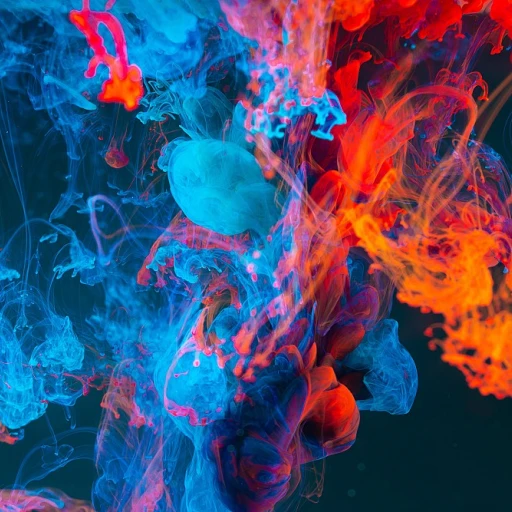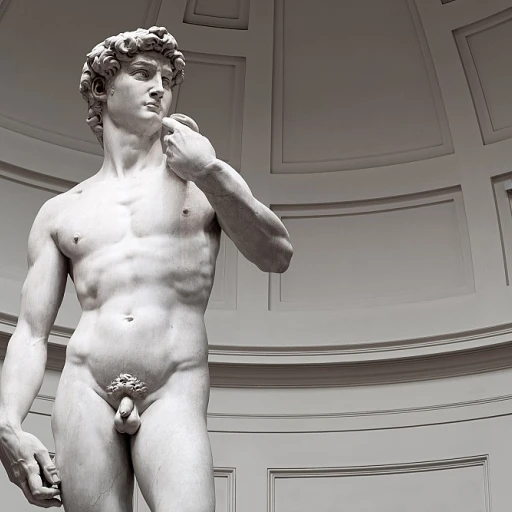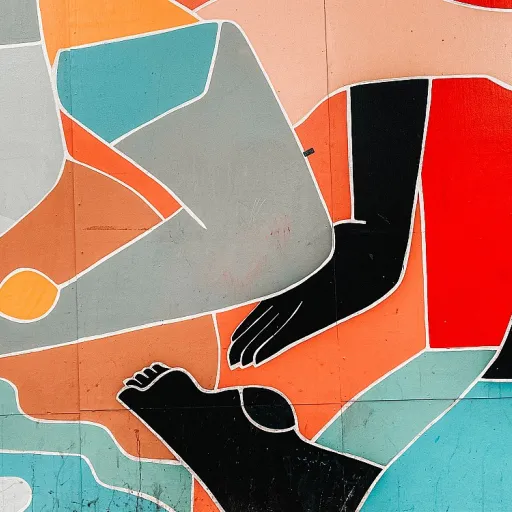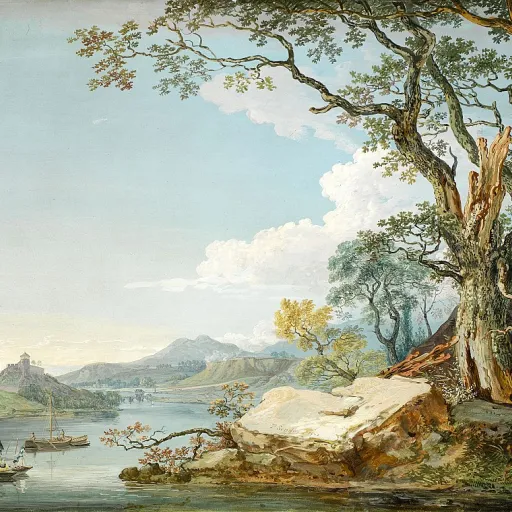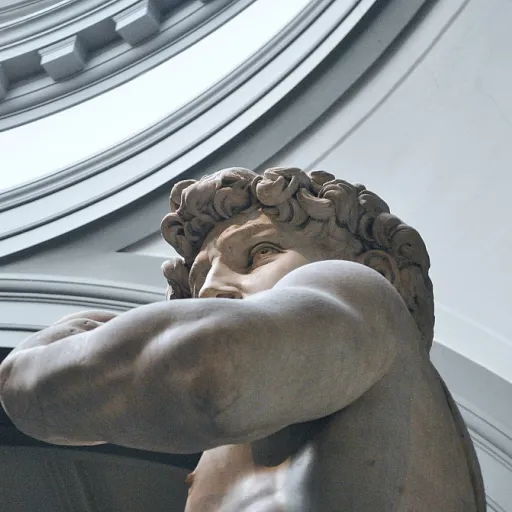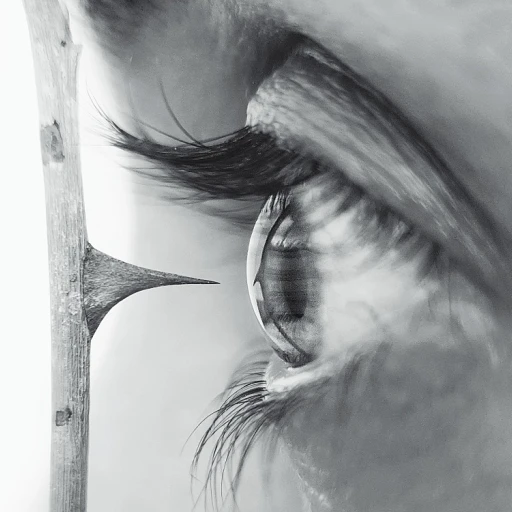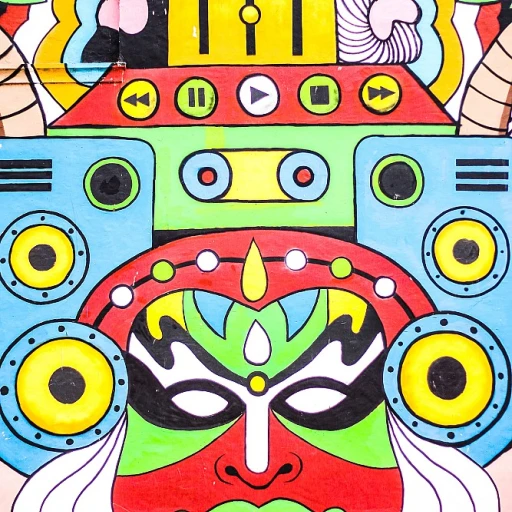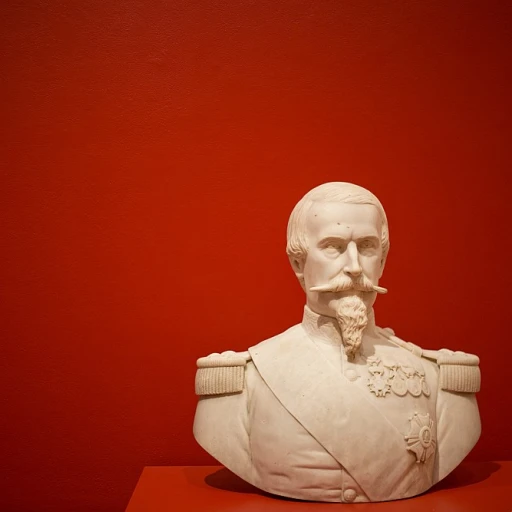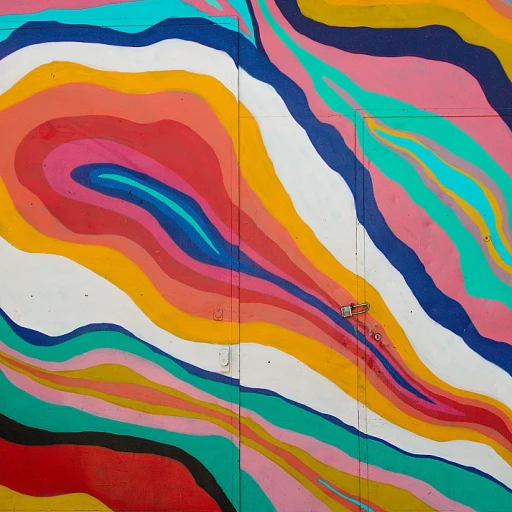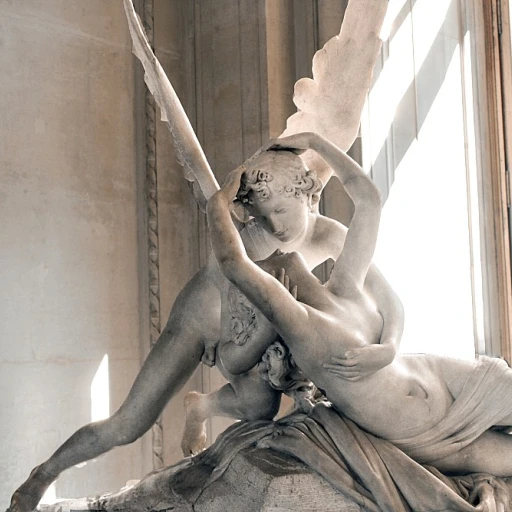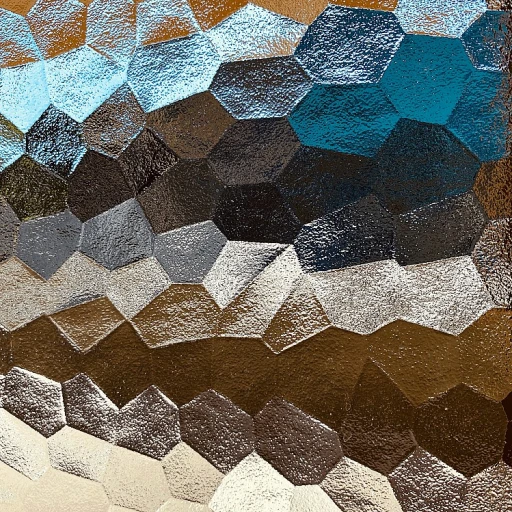-teaser.webp)
The Allure of Luxury Art
The Timeless Appeal of High-End Art
The allure of luxury art is a fascinating subject that captivates both seasoned collectors and new enthusiasts alike. This world of opulence and creativity is not just about acquiring expensive paintings or sculptures; it's about immersing oneself in the rich tapestry of art history and the stories that each piece tells. Whether it's a modern masterpiece or a classic oil painting, the value of these works often transcends their aesthetic appeal.
Luxury art is more than just a display of wealth. It's a reflection of an individual's taste, a conversation starter, and a piece of history. The intricate brushstrokes of a painting or the delicate chiseling of a sculpture can transport viewers to different eras, offering a glimpse into the life and times of the artists who created them. For instance, the evolution of architecture in art provides insights into how cultural and societal shifts have influenced artistic expression over the years.
Art galleries and exhibitions around the world showcase these treasures, allowing art lovers to experience the grandeur and creativity firsthand. From the renowned halls of the National Gallery to private collections in the United States, the journey through art is both educational and exhilarating. For students and enthusiasts, learning about art history and the fascinating facts about artists like Van Gogh or the enigmatic Mona Lisa can be a fun and enriching experience.
In the coming sections, we'll delve deeper into the hidden stories behind these masterpieces, explore the role of technology in art authentication, and discuss the economics of art investment. We'll also touch on the cultural impact of luxury art and the growing importance of sustainability in the art world. Each of these aspects contributes to the enduring charm and significance of luxury art in our lives.
Hidden Stories Behind Masterpieces
The Captivating Chronicles Behind Iconic Artworks
The allure of luxury art is not only embedded in its exquisite aesthetics but often in the captivating hidden stories it holds. Each piece of art tells a story that goes beyond the canvas and paint. The narratives behind some of the world's most expensive paintings and sculptures add a layer of depth that can fascinate both the casual observer and the seasoned art enthusiast. Delving into these stories reveals intriguing details that enrich our understanding of history and art history. In the heart of the art world, paintings like the 'Mona Lisa' and compositions by the modern icon, known for his vivid color palettes, are steeped in mysteries that have fascinated historians for centuries. These intriguing tales include symbolic meanings, forgotten techniques, and sometimes even scandalous events that shaped the final masterpiece. For example, while learning about artists, students often uncover the trials and tribulations faced by these creative geniuses, adding to the "history fun" and broadening our appreciation for their "work." Understanding these narratives also bridges the cultural tapestry that spans nations like the "United States," showcasing the diverse influences that have molded the evolution of art over the years. Museums around the world, such as the "National Gallery," are treasure troves for history buffs and lovers of "fun facts" about artists' turbulent journeys and the fascinating "history facts" tied to the pieces we admire today. Furthermore, we see the intimate connection between life and art through these stories. Each brushstroke not only tells the conscious intention of the artist but also hints at the socio-political climate of its time, reflecting how art has impacted and been influenced by culture across generations. Those interested in further exploring this influence and its correlation with design and style can check a journey that highlights this interplay in the evolution of architecture. The concealed tales behind masterpieces are why art remains an enduring subject of admiration, debate, and learning. They add layers to the visual beauty we perceive, whether it is an "oil painting" or a modern "painting sculpture." These "interesting facts" about art entice collectors, historians, and art lovers to look beyond the obvious, elevating the appreciation of luxury art to new heights.The Role of Technology in Art Authentication
Revealing the Secrets: The Intersection of Technology and Art Authentication
The infusion of technology into the world of art has ushered in a new era of possibilities, particularly when it comes to art authentication. For years, the art world has grappled with the challenge of verifying the authenticity of treasured pieces such as oil paintings and sculptures. With the rise of digital advancements, this daunting task has become less insurmountable. In modern art galleries, cutting-edge technologies like infrared reflectography and X-ray fluorescence have significantly enhanced our ability to distinguish genuine works from forgeries. These tools allow experts to uncover the hidden layers beneath the surface of paintings, revealing tell-tale signs about the artist's techniques and materials used. This level of meticulous scrutiny ensures that art remains both a valuable investment and a revered cultural artifact. Equally transformative is the application of artificial intelligence in the art world. Machine learning algorithms can now analyze vast troves of painterly data, comparing brushstrokes and color palettes to identify subtle patterns that the human eye might miss. This digital innovation aids experts in confirming a painting's provenance and ascertaining its rightful place in art history. Museums and collectors dedicated to the preservation of national treasures—whether an artwork be famously housed in the National Gallery or a private collection—rely heavily on these technological advancements. In the fun and educational world of art, about artists' life and work, students can delve into learning art with newfound appreciation and trust in the history behind each piece. For those interested in the stunning dynamics of art itself, the artistry behind the Monaco Flag coloring experience represents a contemporary exploration of color and identity within the cultural sphere. The constant evolution of art, supported by technology, ensures that both historical and modern masterpieces continue to captivate, safeguarded by a new layer of scientific scrutiny.The Economics of Art Investment
The Financial Canvas of Art
Investing in luxury art is akin to navigating a complex yet rewarding financial landscape. The allure of owning a piece of history or a modern masterpiece is undeniable, but the economics behind it are equally fascinating. Art, whether it be oil paintings or sculptures, has long been considered a stable investment, often outpacing traditional markets in terms of appreciation.
For many, the journey begins with understanding the art history and the facts about artists whose works they wish to acquire. Knowing the interesting facts about a piece can significantly impact its perceived value. For instance, the Mona Lisa and works by Van Gogh are not just paintings; they are cultural icons with stories that span centuries.
In recent years, the art market has seen a surge in interest from younger investors and students eager to learn about art as an asset class. This demographic shift is partly due to the increasing accessibility of art galleries and online platforms that make learning about art investment more approachable. The National Gallery and other institutions play a crucial role in educating potential investors about the nuances of art valuation.
Market Dynamics and Trends
The dynamics of the art market are influenced by various factors, including economic conditions, cultural trends, and technological advancements. For instance, the rise of digital art and NFTs has introduced a new dimension to art investment, attracting a tech-savvy audience interested in modern and creative works.
Moreover, the colour and creative expression found in art can reflect broader societal changes, making certain pieces more desirable during specific periods. As such, understanding these trends is crucial for anyone looking to invest in art.
Challenges and Considerations
While the potential for high returns is enticing, investing in art is not without its challenges. The market can be opaque, with prices often influenced by subjective factors such as the artist's reputation and the piece's provenance. Additionally, the costs associated with maintaining and insuring valuable artworks can be significant.
Investors must also consider the impact of external factors, such as the ruined countryside or geopolitical events, which can affect the availability and desirability of certain artworks. Despite these challenges, the cultural and financial rewards of art investment continue to attract a diverse array of collectors and enthusiasts.
Cultural Impact of Luxury Art
Cultural Significance of Artistic Creations
Luxury artwork isn't just about opulence; it plays a significant role in shaping and reflecting cultural narratives. Paintings and sculptures transcend mere decoration; they mirror the values, beliefs, and the very essence of societies. For instance, the captivating strokes in an art gallery can narrate tales of an artist's life or highlight social themes that resonate across the globe. In art history, masterpieces like the Mona Lisa have long intrigued art students and enthusiasts. These paintings are more than mere visual spectacles. They are pivotal in understanding the historical contexts and cultural shifts over the centuries. One interesting facet is how modern artists blend traditional methods with contemporary themes, resulting in artworks that communicate powerful messages. This blend not only provides fresh insights into history art but also fosters a deeper connection between the viewer and the piece. Luxury art galleries often become the stage where historical elements meet modern narratives, creating an engaging learning environment. Luxury paintings and sculptures also have the power to influence cultural perceptions. Take, for instance, the works of oil paintings in national galleries that reflect the societal transformations of the times they were created in. The subtle use of colour and unique creative styles adopted by artists over the years have impacted cultural dialogues, pushing boundaries and inspiring innovative movements in art history. Moreover, the passion and dedication of both emerging and established artists highlight the cultural vitality within the art world. When top artists incorporate fun, creative techniques in their works, they not only make the art about vibrant expression but also enrich cultural landscapes. Understanding the cultural value of luxury art is crucial for students and art lovers alike. The rich tapestry of interesting facts, art history trivia, and hidden stories embedded within expensive paintings make them timeless pieces that speak volumes about the world we live in and the lives portrayed within their frames.Sustainability in the Art World
Embracing Sustainable Practices in Art
The art world, renowned for its luxury and opulence, is increasingly finding itself at the intersection of creativity and sustainability. As students of art history will recognize, the evolution of art hasn't always prioritized eco-friendly practices. However, the modern movement towards sustainable art is gaining momentum, prioritized by artists and galleries aiming to preserve not just the art itself but also the planet.
Many art galleries now promote sustainable art practices, encouraging artists to adopt materials and methodologies that minimize environmental impact. Artists are progressively leaning into innovative techniques that involve using recycled materials, natural pigments, and eco-conscious solutions for their creative expressions. This conscious shift in the choice of materials also reflects upon the artworks’ narratives, adding depth to the hidden stories behind masterpieces.
Moreover, the economics of art investment has traditionally emphasized monetary value; yet, there is growing interest in how sustainable practices contribute to long-term worth. This approach not only impacts the immediate community, but also engrains a cultural impact that transcends generations, enriching the tapestry of history art offers.
Art is not limited to sculptures and oil paintings, as painting sculpture installations and interactive exhibitions, sometimes created with minimalistic materials, increasingly engage audiences. By navigating this delicate balance between luxury and sustainability, art continues to tell intriguing stories while ensuring it doesn’t contribute to the ruined countryside or environmental depletion.
The cultural impact of luxury art is undeniable, and as the art world reels from significant changes in the socio-political and environmental landscape, embracing sustainability can become a valuable narrative—a fun and meaningful way to engage with art’s aesthetics and ethics. Enthusiasts, collectors, and artists can look towards a future where art, history, and environmental responsibility coexist in harmony.

